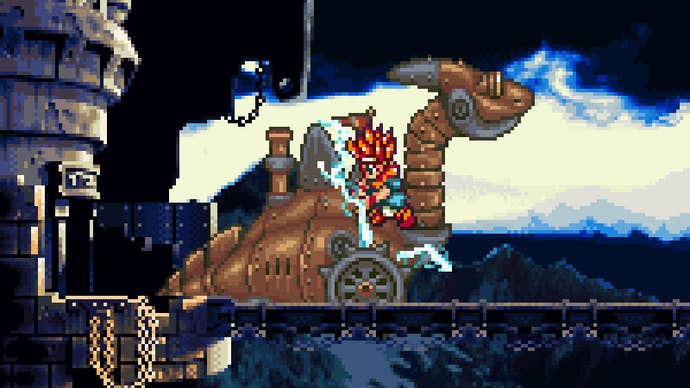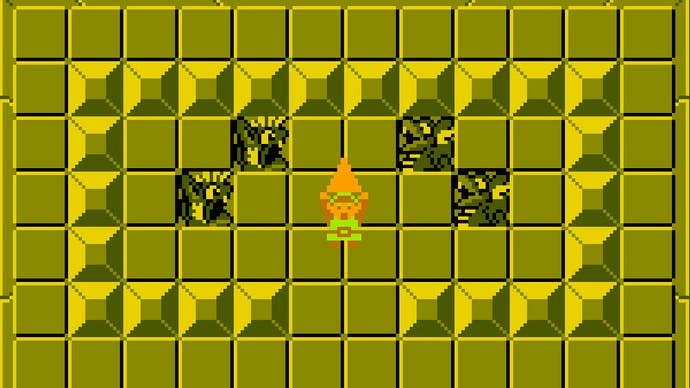What Are the Best New Game Plusses?
Finishing off the final boss doesn't always mean the party's over. Here are some games that put a worthwhile spin on things the second time around.
This article first appeared on USgamer, a partner publication of VG247. Some content, such as this article, has been migrated to VG247 for posterity after USgamer's closure - but it has not been edited or further vetted by the VG247 team.
Sometimes, when a game ends, we're not quite ready to see it go.
That's why the concept of "new game plus" has made for one of the best innovations in game design since the continue: After watching those credits roll, this mode lets us jump back into the world we previously conquered for some brand-new surprises. And while most modern games let you carry over your character for another round, some go a little further in trying to challenge what you think you know. You'll find the best examples of new game plus below, but if you can think of any we've neglected, please tell us in the comments section!

[Chrono Trigger - Super Nintendo - 1995]
An obvious inclusion, but still, an important one. It's possible other games attempted something similar before this SNES RPG, but Chrono Trigger popularized the idea of new game plus by giving this mechanic the name it's known best by. Oh yeah, and by making it the only way to see all of those glorious endings. While you can fight Lavos at many points during Crono and the gang's journey, odds are, they're not going to be strong enough to survive its wrath until the very end of the game. A return trip through Chrono Trigger carries over all of your character levels, abilities, and equipment, making it possible to finish off the hideous space urchin antagonist much earlier—in fact, one of the strangest (and best) endings requires the player to take on Lavos at the very beginning of the game without that vital third party member.

[Resident Evil 2 - Sony PlayStation - 1998]
Resident Evil's been around for nearly 20 years, but Capcom's never tried anything quite as ambitious as what's found in the second installment. Upon starting Resident Evil 2, you're asked to choose between Leon Kennedy and Claire Redfield, though a complete playthrough of the game requires you to take control of this second character once the final curtain closes on the first. Thanks to the oddly named "Zapping System," starting a new game with the alternate protagonist gives this escape from Raccoon City a few new twists, with choices made in the first game directly affecting how the second playthrough unfolds. This new game plus mode also offers a brand new challenge in the form of Mr. X, a hulking, trenchcoat-clad member of the undead who stalks you throughout. Capcom liked this idea so much, they even made it the centerpiece of the following game, Resident Evil 3: Nemesis.

[The Legend of Zelda - NES - 1987]
Okay—technically, The Legend of Zelda doesn't offer a new game plus mode. Still, its equivalent offers so much content, it would be a shame to keep Link's first game off this list. So, you probably know that, in Japan, Nintendo created a sequel to Super Mario Bros. that essentially remixed elements of the first game into a collection of incredibly hard levels. They did the same thing with Zelda, but instead of releasing this remix as a separate product, Nintendo included it on the cartridge itself in the form of a "Second Quest." Entering your name as "Zelda" before beginning the game will drop you directly into this new adventure, which changes item and shop locations, enemy placements, and even dungeon layouts. Even though the demands of this Second Quest might be too much for most players, it's still incredible to think that, after finishing The Legend of Zelda's development, Miyamoto and his team added an entirely new spin on their original creation just because they wanted to. (Ah, the days before DLC.)

[999: 9 Hours, 9 Persons, 9 Doors - Nintendo DS - 2010]
The visual novel/adventure game 999 actually uses the concept of new game plus to inform its fundamental design. As you make choices through this twist-laden narrative, many pathways inevitably lead to fatal dead ends—but when you jump back into the game, you can use this knowledge to avoid failure your second (or third, or fourth) time through. And, as you see more of 999's endings, the protagonist will begin to remember these past time loops, leading to one of the most satisfying marriages imaginable between gameplay and narrative—but to say anything more would involve dropping some massive spoilers, and no one wants that. 999's sequel, Virtue's Last Reward, would make its predecessor's new game plus feature a lot more intuitive by allowing players to start from any point of the story they've already visited, making it so death no longer required a restart at square one. (And thankfully, the creator has hinted that the long-awaited third game may be coming soon.)

[Um Jammer Lammy - Sony PlayStation - 1999]
Um Jammer Lammy was a massive flop, though it could have fared much better had Sony let consumers know an entire Parappa the Rapper game also existed on that black PlayStation disc. That's right: It wasn't listed on the back of the box, or mentioned at all in preview coverage, but reaching the end of Um Jammer Lammy unlocks Parappa as a playable character, who can rap his way through hip-hop remixes of all but one of Lammy's songs. It's an incredible amount of content that's essentially hidden away, and the addition of these five levels actually makes Lammy twice as big as the relatively brief Parappa the Rapper—again, something Sony should have advertised openly. Sadly, few felt the urge to try this strange-sounding game featuring a rock-and-roll lamb on the cover, though the promise of more Parappa definitely would have definitely brought more people on board.
